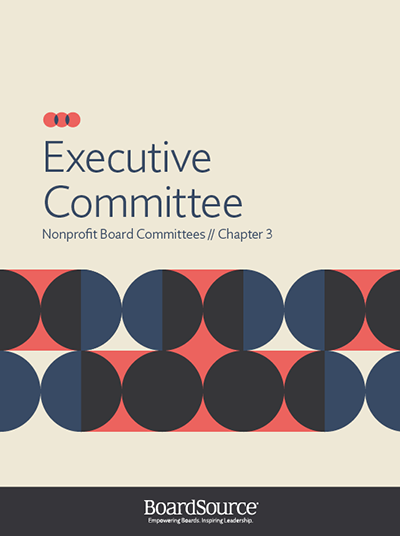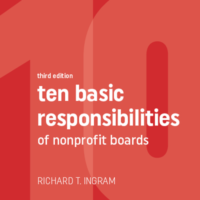Nonprofit Board Committees: Executive Committee
- Product Details
-
- Format
- Editor
- Ellen Hirzy
- Publication Date
- 2018
- Number of Pages
- 42
- Level
- 201
$38.00
Overview
The executive committee is a small group of board members — usually including the board chair, other officers, and the chief executive as an ex officio member — that often has the authority to make decisions on behalf of the full board. Committee chairs may also sit on this committee. Its overarching role, like the role of all committees, is to help the board do its work in the most efficient way.
While most boards have executive committees (76 percent according to Leading with Intent: 2017 National Index of Nonprofit Board Practices), BoardSource encourages all boards to ask if they really need one. Not all do. When creating any committee, it is wise to first analyze the entire structure of the board and determine if that particular committee would add value. This chapter helps each board make its own best decision about whether to have an executive committee. It addresses some of the benefits and challenges, takes a look at how an the committee operates, and presents some best practices that will support the committee’s success.
Questions answered in this chapter from Nonprofit Board Committees include the following:
- Would an executive committee support and add value to the work of our board?
- What are the benefits and drawbacks of an executive committee, and how do those factors apply to us?
- What would governance look like if we did not have an executive committee?
- If we choose to have an executive committee, how do we make sure it does not take on the work of the full board?
This PDF includes the first chapter of Nonprofit Board Committees — Transforming Committee Structure — as well as the Executive Committee chapter.




